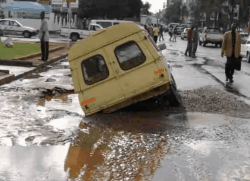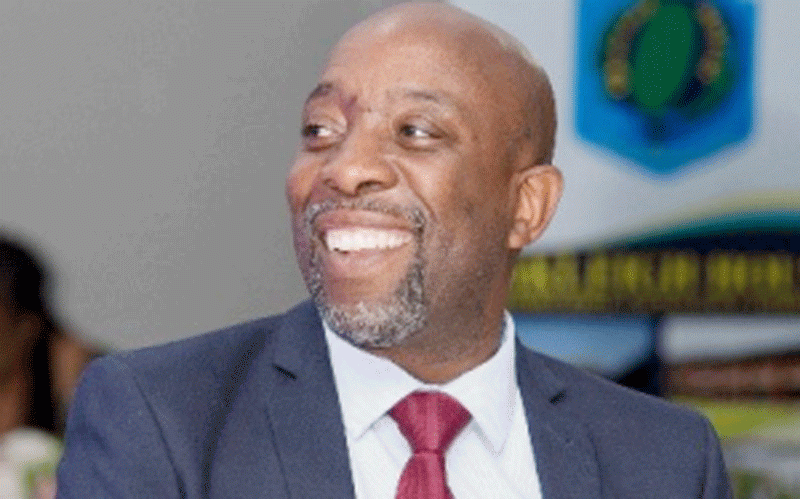
My sister-in-law visiting home from the United States after a 10-year absence could not help express her disappointment at the present state of Zimbabwe’s infrastructure, which she described as “embarrassing”. I found myself with no choice but to agree with her.
Environment with Chipo Masara
It is true; the country’s infrastructure is in a dire state!
Although many Zimbabweans might not agree with this, the one notably positive thing that Zimbabwe benefitted from colonisation by Britain was the infrastructure the latter left in place. Ironically, while the British have been subject to much attack for their role in colonising the country and all that came with it, the infrastructure they left in place still makes up much of the infrastructure in present day Zimbabwe.
One would have thought that after 33 years of “sovereignty”, Zimbabwe would have made strides towards improving things. Regrettably, this has not been the case. There has not been much notable investment in the country’s infrastructure, a fact that explains the country’s present lacklustre state.
There have, over the years, been outcries from especially the country’s urbanites who blame the government for failing to develop the country’s infrastructure, in line with the changing demographics that has seen more people migrating from rural areas to urban areas in search of jobs and greener pastures. It is clear that the existing facilities in the towns and cities are overwhelmed and cannot, in their present state, continue to cater for the growing populations.
The country’s sewer system has for some time now been under serious threat. Sewer bursts are common in most areas, leaving people to live with a pungent smell and making it hard to control the typhoid and cholera scourges that often wreak havoc in the country.
Furthermore, as a result of malfunctioning waste water treatment plants in the country, raw sewage has been finding its way into the country’s rivers, some of which are the main source of water for the urban population. The situation got so bad that there have been reports of people receiving tap water that smelt of human waste. However, as it happens, the tap water is seldom available in most areas, as is the case with electricity! Govt to rehabilitate roads — Mugabe
- Chamisa under fire over US$120K donation
- Mavhunga puts DeMbare into Chibuku quarterfinals
- Pension funds bet on Cabora Bassa oilfields
- Councils defy govt fire tender directive
Keep Reading
In his recent inauguration speech, President Robert Mugabe made mention of the definite need for infrastructural development, a sign that the government is fully aware of how much trouble the country’s infrastructure is in.
The President promised, among many other things, the rehabilitation of road networks. If that particular promise were to be fulfilled, it would be a great start, as the long-neglected roads are presently in a state that calls for concern. Potholes have become a common sight in most areas, so much that people have almost come to get used to them, owing to their long presence. Vehicle owners have had to grapple with damages to their vehicles that travel along the country’s roads every day. The pathetic roads have also been blamed for much of the road carnage that tends to kill many on a regular basis.
It is also an undeniable fact that the roads have become too small to accommodate all the vehicles in the country today. While a decade ago, owning a vehicle in Zimbabwe was a rare privilege reserved for a few, today it is quite commonplace, especially with the advent of the imported Japanese second-hand cars that have filled the roads. Add to that, the amount of public transportation in the form of commuter omnibuses, better known as “kombis”, has increased at an alarming rate, bringing chaos to the cities, as the vehicles often do not have appropriate stations from which to drop and pick passengers.
“It’s amazing what a new coat of paint can do. Do you know how different the city would look if most of these buildings were painted?” said my sister-in-law, as she clearly battled to understand why Harare now looked so “dull”. And again, as much as I might have hated to admit it, as I live in Harare, I had to agree with her.
While most of the buildings might have looked okay 30 years ago, most of them just look very dull now. One seldom comes across buildings freshly painted in pristine bright colours like red, yellow, orange, green or purple as one would find in say the neighbouring South Africa. It’s almost as if bright colours were considered outrageous in Zimbabwe, as the cities are coloured in mostly the ancient-style grey, brown, white and beige colours. In some areas, all it would take is a fresh coat of paint to brighten things up.
A revamp of the country’s infrastructure will go a long way in portraying the country as one that is moving forward. As things currently stand, one would be forgiven for thinking the country has been stagnant for the last 33 years.










